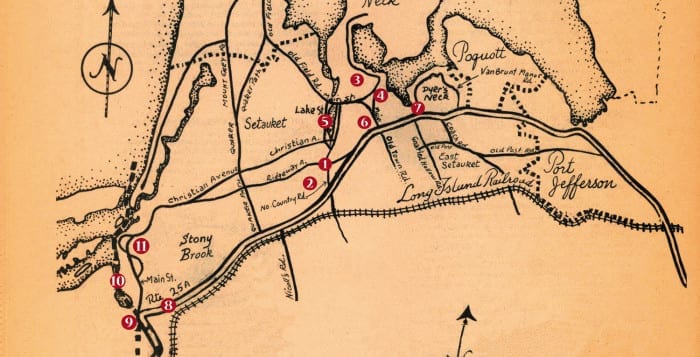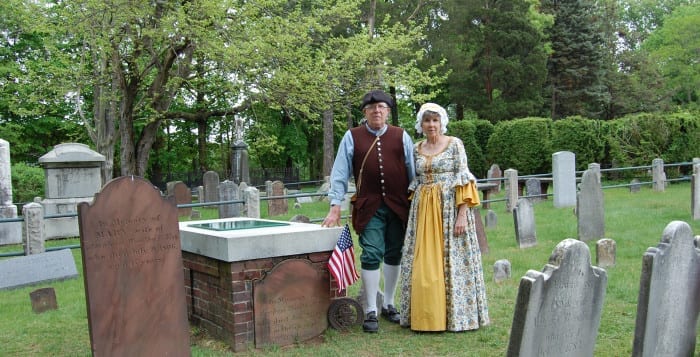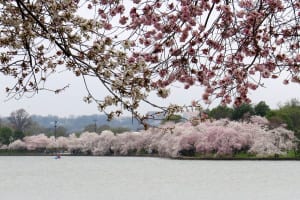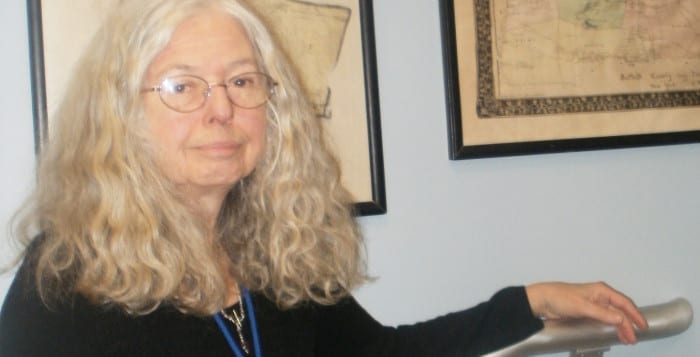The Culper Spy Ring has gained much attention over the last 10 years from the publishing of two books and AMC airing the television series TURN. On June 20, the Three Villages will be sharing its famous story with a day-long event, Culper Spy Day — Our Revolutionary Story. Join them to learn the real history behind the Culper Spy Ring, America’s first. Many historic locations dating as far back as 1655 will open their doors to the public and a local restaurant will offer a spy-themed lunch menu.
Sponsored by Tri-Spy Tours, the Three Village Historical Society, the Long Island Museum and the Ward Melville Heritage Organization, the event will coincide with the Long Island Convention and Visitors Bureau Path Through History Weekend. The event is from 10 a.m. to 3 p.m.
1. Three Village Historical Society, 93 N. Country Road, Setauket. Located in the c. 1800’s Ebenezer Bayles/Stephen Swezey house, the Three Village Historical Society is home to the interactive Culper SPIES! exhibit and the Chicken Hill: A Community Lost to Time exhibit. Stop by and meet a visiting friend from Oyster Bay, Robert Townsend, aka Samuel Culper Jr. The gift shop will also be open.
— A one-hour Tri-Spy Walking Tour will be held at 11 a.m. and 1 p.m. Walk your way through the history of the Revolutionary War’s Culper Spy Ring. Visit Woodhull’s Farm, the Setauket Village Green, Grist Mill, Patriot’s Rock and historic grave sites. Meet at the entrance of Frank Melville Memorial Park.
— A historic district walking tour as it pertains to the Revolutionary War will depart from the entrance of Frank Melville Memorial Park at 10 a.m., noon and 2 p.m. Visit Patriot’s Rock, the cemetery where the leader of the Setauket Spy Ring is buried and the homes of early residents. 631-751-3730.
2. Thompson House Medicinal Garden, 91 N. Country Road, Setauket. Self-guided tour. Doctor Samuel Thompson was a colonial era doctor and farmer. According to his diaries, members of the Culper Spy Ring, including Abraham Woodhull and Austin Roe, were among his patients. 631-751-2244.
3. Caroline Church of Brookhaven, 1 Dyke Road, Setauket. Docents will lead a tour of this church and its adjoining cemetery. Built in 1729, it is the oldest continuously operating Episcopal Church in the United States. The cemetery holds the graves of early settlers of the town, Revolutionary War heroes, ship captains and industry leaders. 631-941-4245.
4. Setauket Presbyterian Church, 5 Caroline Ave., Setauket. Docents will lead a tour of the historic church, circa 1812, and its adjoining cemetery, which dates back to the 1600s. Abraham Woodhull of George Washington’s Spy Ring, genre artist William Sidney Mount and early settler Richard Floyd, grandfather of William Floyd, are buried here. 631-941-4271.
5. Setauket Village Green, Main Street, Setauket. A replica of a Dutch 1768 single-sail boat will be on display here. During the Revolutionary War, the Village Green was the location of the Battle of Setauket, a skirmish between Tory and Patriot troops that took place on Aug. 22, 1777. Prior to the battle, it was called Meeting House Green where meetings were held during the early settlement period of the mid to late 1600s.
6. Emma S. Clark Memorial Library, 120 Main St., Setauket. Circa 1892. The library will present a demo of its interactive Spy Ring Tour, and materials and databases related to the Culper Spy Ring will be on the library lawn. Military paraphernalia will be on display in the Library lobby. Stop by and meet Anna Smith Strong and her “magic clothesline.” 631-941-4080.
7. Joseph Brewster House, Route 25A, Setauket. Circa 1655, it is considered to be the oldest home in the Town of Brookhaven. During the Revolutionary War, the house was owned by Joseph Brewster, first cousin of Culper Spy Caleb Brewster and neighbor of the ring’s founder, Benjamin Tallmadge. In order to preserve his home and property from confiscation, Joseph Brewster operated a tavern out of the home, hosting the occupying British forces. A colonial cooking demonstration will take place on the grounds. 631-751-2244.
8. Country House Restaurant, 1175 N. Country Road, Stony Brook. Built in 1710, the restaurant is dedicated to serving the finest food and spirits in one of Long Island’s most historic homes. The restaurant will serve a special Spy-themed menu from noon to 4 p.m. Adult meals will range from $10 to $16 and children’s meals are $8.95, which includes a soft drink. For reservations, please call 631-751-3332.
9. Long Island Museum, 1200 Route 25A, Stony Brook. Tour the museum’s galleries as well as the outbuildings. The Nassakeag Schoolhouse, circa 1895, will be open with a docent. Two of the museum’s horse-drawn vehicles were owned by Revolutionary War hero Peter Gansevoort, grandfather of author Herman Melville. 631-751-0066.
10. Stony Brook Grist Mill, 100 Harbor Road, Stony Brook. A miller will be on hand for grinding demonstrations. Long Island’s most completely equipped and working mill, the mill, circa 1751, is listed on the National Register of Historic Places. During the Revolutionary War, occupying British forces confiscated much of the grain to provision their own troops. 631-689-3238.
11. Stony Brook Village Center, 111 Main St., Stony Brook. Docents will guide visitors on a walking tour of historic Main Street. Points of interest will include the Stony Brook Village Center, Hercules and the Educational Center. Tours will depart on the hour from 11 a.m. until 2 p.m. 631-751-2244.
Tickets are $20 each (children under 12 free) and can be purchased at the following locations:
• Three Village Historical Society, 93 North Country Road, Setauket. 631-751-3730 or visit www.tvhs.org.
• The Long Island Museum, 1200 Route 25A, Stony Brook. 631-751-0066 or visit www.longislandmuseum.org.
• The Ward Melville Heritage Organization, 111 Main Street, Stony Brook. 631-751-2244 or visit www.wmho.org.









